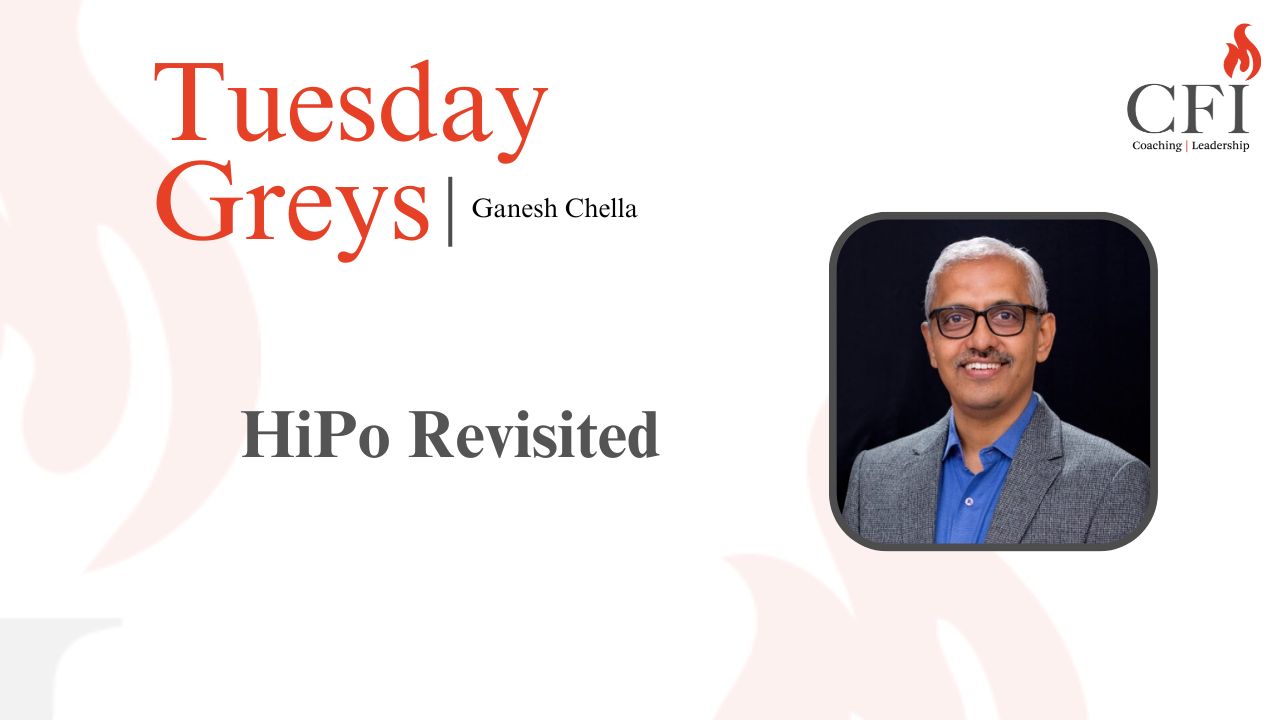
HiPo Revisited
HiPo are individuals identified as displaying the potential to raise to future positions. Organizations typically identify such HIPOs and then invest in their development.
In this post, I wish to share an alternate perspective about this whole subject of HiPos. .
But first, my story.
In the year 1982, 41 years ago, Fr. McGrath from XLRI interviewed me to consider selection into its two-year PGD PM & IR program.
As I look back, I think, Father McGrath (Maggie as he was lovingly called) decided to select me not based on my potential to become an HR Professional. He was perhaps looking at my propensity to learn and through that actualize my potential.
Organisations rely heavily on assessment and development centres as scientific means to assess potential against a set of competencies.
Unfortunately, these “static” assessments are used to sort and segregate and then restrict development investments to those “emerging” as having potential.
I invite all of us to think of potential in a much more expansive and dynamic manner – a manner that is befitting the world we are living in and will live in, in the days to come.
This is where I wish to talk about the work of Professor Feuerstein. My familiarity with his work is thanks to my wife Sudha’s training in the Instrumental Enrichment Program and the Learning Propensity Assessment Device (LPAD), both of which are at the heart of the Feuerstein Method.
Professor Reuven Feuerstein, a clinical, developmental and cognitive psychologist saw intelligence as the ability to learn. He further concluded through years of research and work with children that this ability to learn could be increased through human mediation – providing a bridge between the learner and the content of learning, keeping the learner needs in mind. (Like a Coach)
To this end the Feuerstein assessment method (LPAD) involved test – teach – test: test to establish a base line; enhance the learning ability through mediated learning; test again to arrive at the person’s learning propensity.
If this idea were to be applied to the field of leader development, what would it look like?
We would first look at selecting a larger universe of individuals to develop.
We would then assess them not to segregate and pick up a few but to establish a base line.
We would then impart at least a foundational level of developmental inputs including mediated learning to all of them to enhance their learning ability.
At the end of the journey, we would assess to see the learning that has occurred.
By adopting a dynamic rather than static view of potential, organizations may be able to embrace a much more diverse and broad-based talent pool – a much needed ingredient for success in the days to come.
In my mind, potential is learning potential and not leadership potential – after all, if leaders know how to learn, they can learn and grow forever.

